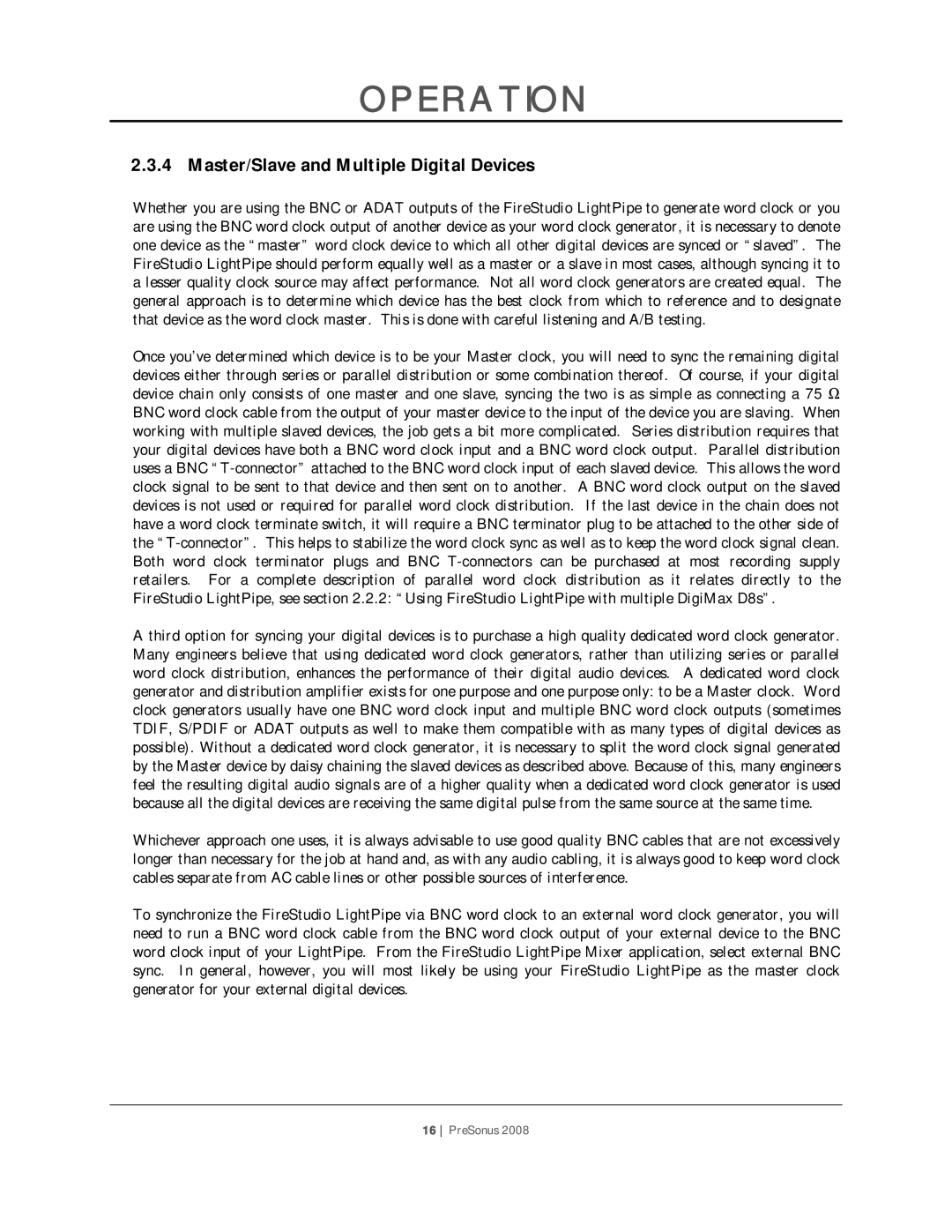
OPERATION
2.3.4 Master/Slave and Multiple Digital Devices
Whether you are using the BNC or ADAT outputs of the FireStudio LightPipe to generate word clock or you are using the BNC word clock output of another device as your word clock generator, it is necessary to denote one device as the “master” word clock device to which all other digital devices are synced or “slaved”. The FireStudio LightPipe should perform equally well as a master or a slave in most cases, although syncing it to a lesser quality clock source may affect performance. Not all word clock generators are created equal. The general approach is to determine which device has the best clock from which to reference and to designate that device as the word clock master. This is done with careful listening and A/B testing.
Once you’ve determined which device is to be your Master clock, you will need to sync the remaining digital devices either through series or parallel distribution or some combination thereof. Of course, if your digital device chain only consists of one master and one slave, syncing the two is as simple as connecting a 75 Ω BNC word clock cable from the output of your master device to the input of the device you are slaving. When working with multiple slaved devices, the job gets a bit more complicated. Series distribution requires that your digital devices have both a BNC word clock input and a BNC word clock output. Parallel distribution uses a BNC
A third option for syncing your digital devices is to purchase a high quality dedicated word clock generator. Many engineers believe that using dedicated word clock generators, rather than utilizing series or parallel word clock distribution, enhances the performance of their digital audio devices. A dedicated word clock generator and distribution amplifier exists for one purpose and one purpose only: to be a Master clock. Word clock generators usually have one BNC word clock input and multiple BNC word clock outputs (sometimes TDIF, S/PDIF or ADAT outputs as well to make them compatible with as many types of digital devices as possible). Without a dedicated word clock generator, it is necessary to split the word clock signal generated by the Master device by daisy chaining the slaved devices as described above. Because of this, many engineers feel the resulting digital audio signals are of a higher quality when a dedicated word clock generator is used because all the digital devices are receiving the same digital pulse from the same source at the same time.
Whichever approach one uses, it is always advisable to use good quality BNC cables that are not excessively longer than necessary for the job at hand and, as with any audio cabling, it is always good to keep word clock cables separate from AC cable lines or other possible sources of interference.
To synchronize the FireStudio LightPipe via BNC word clock to an external word clock generator, you will need to run a BNC word clock cable from the BNC word clock output of your external device to the BNC word clock input of your LightPipe. From the FireStudio LightPipe Mixer application, select external BNC sync. In general, however, you will most likely be using your FireStudio LightPipe as the master clock generator for your external digital devices.
16 PreSonus 2008
